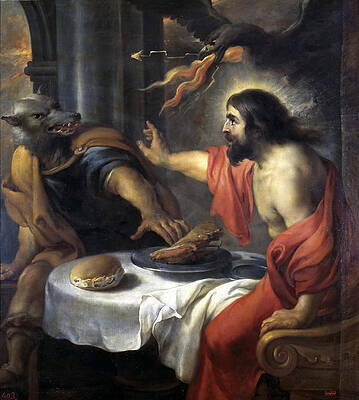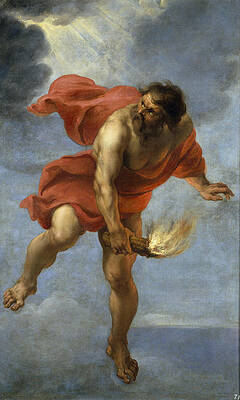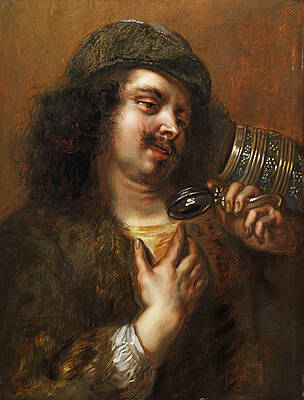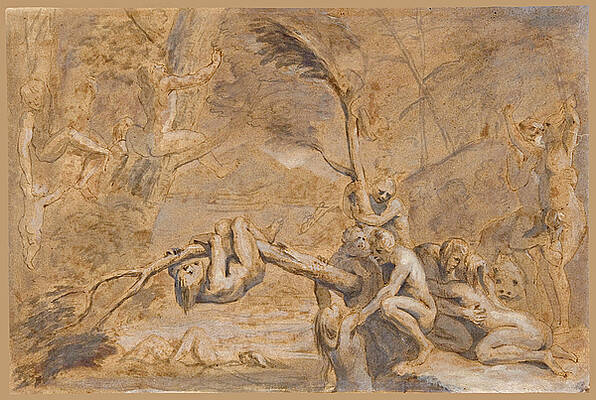Jan Cossiers
Paintings
Jupiter and Lycaon
Prometheus Carrying Fire
Man holding a pewter charger with a chicken
A man looking into his empty tankard
Portrait of a nobleman in half armour
Portrait of a Man in a Wide-Brimmed Hat
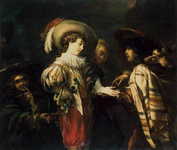

The Parable of the Prodigal Son
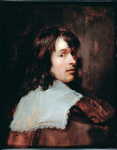
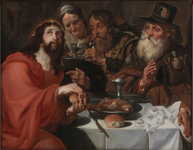
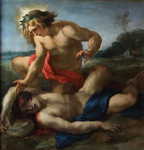
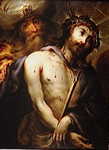
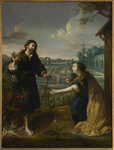
Jesus appears to Mary Magdalene
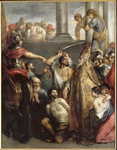
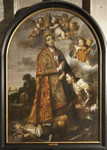
St Rumbold blesses St Libertus

The Adoration of the Shepherds

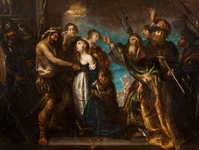
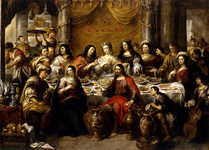
The wedding at Cana: Jesus blesses the water
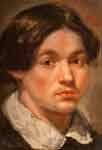
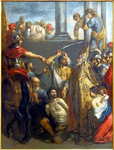
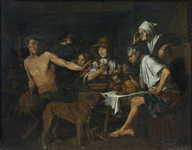
Satyr as a Guest of the Peasant
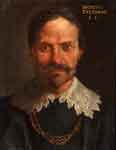
Portrait of Theodor van Thulden
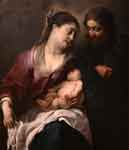
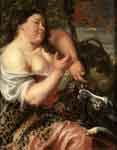
Portrait of a Young Magistrate
The Flood
Fine Art Prints | Greeting Cards | Phone Cases | Lifestyle | Face Masks | Men's , Women' Apparel | Home Decor | jigsaw puzzles | Notebooks | Tapestries | ...
Prometheus Carrying Fire
Jan Cossiers[1] (Antwerp, 15 July 1600 – Antwerp, 4 July 1671) was a Flemish painter and draughtsman who occupied an important position in the Flemish art world after Rubens’ death in 1640. Cossiers’ earliest works were Caravaggesque genre scenes. Later in his career he painted mostly history and religious subjects as well as portraits.
Life
Jan Cossiers was the son of Antoon, a watercolor painter, and Maria van Cleef. He was baptized in Antwerp Cathedral on 15 July 1600.[2] He received his first training from his father and then moved to the studio of the prominent portrait and history painter Cornelis de Vos.[3]
He travelled to Aix-en-Provence in France, where he stayed with and studied under the Dutch painter Abraham de Vries. He visited Rome where he is recorded in October 1624.[4] In Rome he likely saw work of Caravaggio, which would have an important influence on his work.[5] He was back in Aix-en-Provence in 1626. Here he met Nicolas-Claude Fabri de Peiresc, the famous humanist and close friend of Peter Paul Rubens. Peiresc recommended Cossiers to Rubens. [4] He also met up with other Flemish and Dutch artists such as Simon de Vos and Johan Geerlof as is shown by the group portrait by Simon de Vos referred to as Gathering of Smokers and Drinkers. This portrait is believed to show the three artist friends enjoying a smoke and a drink together during their residence in Aix-en Provence.[6]
Jan Cossiers returned to Antwerp in 1627. The following year he was admitted as a master in the Antwerp Guild of Saint Luke.[5] It is possible that for a short while he was connected to Rubens’ workshop. Apparently Rubens had chosen Cossiers to accompany him to Madrid in 1628 but Cossiers’ parents had opposed the idea.[7] In 1630 Cossiers married Joanna Darragon in the St. James' Church, Antwerp. He became the dean of the Guild in 1640.[5] On 26 July of that year he married for a second time to Maria van der Willigen. He was elected a number of times as a 'consultor' of the 'Sodaliteit der getrouwden', a fraternity for married men established by the Jesuit order.[2]
The Family Flamen
In the 1630s he was able to obtain a number of large commissions thanks to the intervention of Rubens. He assisted Rubens in 1635 in the decorations for the joyous entry of the Cardinal-Infante Ferdinand. Rubens had the overall management of this project.[8] He further assisted with Rubens’ commission for decorating the Torre de la Parada, a hunting lodge of Philip IV of Spain near Madrid. Cossiers painted mythological scenes after designs by Rubens.[5] Other Antwerp artists such as the brothers Cornelis de Vos and Paul de Vos also worked on this large commission.[9]
Cossiers enjoyed he patronage of the governors of the Southern Netherlands such as Cardinal-Infante Ferdinand and Archduke Leopold Wilhelm of Austria. After the death of Rubens in 1640 he was recognized as one of the leading history painters in Flanders and he received many commissions for Counter-Reformation altarpieces. He also was a portrait painter to the rich bourgeoisie.[5]
He had many pupils including Jan Carel van Bremt, Grée Melsen, Jacques (Jacob) de Langhe, Jacques de l'Ange (who may be identical to Jacques de Langhe), Carel van Savoyen and Franciscus van Verbist.[3]
Work
There was a clear evolution in Cossiers’ career, which was not unlike that of some of his Antwerp contemporaries such as Simon de Vos and Theodoor Rombouts. He started out as a painter of Caravaggesque genre scenes. These included the usual subjects of the five senses, the prodigal son, merry companies, smokers, drinkers, fortune tellers, etc. These early works use the typical Caravaggesque chiaroscuro effects with dramatic lighting by a single light source to create dramatic effect and depth.[4] An example of a work painted in this period is the Fortune teller (Musée des beaux-arts de Valenciennes), which depicts a man in very elegant costume who is read his fortune by a gipsy woman while his pocket is being picked. The light falls on the man creating a dramatic effect. Cossiers created many versions of this subject.[10]
The Flagellation of Christ
In the 1630s he became connected to Rubens and commenced to paint history subjects. Examples are the mythological scenes he painted after designs by Rubens for the Torre de la Parada such as the Prometheus carrying fire (Prado Museum). After the death of Rubens he was able to fill the gap left by Rubens’ enormous studio and supplied Counter-Reformation altarpieces to the many churches in Catholic Flanders as well as to the open market. As a result of his training by important portrait painters such as Cornelis de Vos and Abraham de Vries he had the necessary skills to cater to the demand of the well-off bourgeoisie for individual and group portraits.
During the 1630s his work underwent the influence of the monumentality and palette of Rubens, whom he assisted on large commissions. Among his late religious paintings is the large Passion of Christ (1655–6) in the Church of the Beguines in Mechelen.[11] In the 1630s and 1640s his works were very colourful. In his later works his palette became more subdued and his brushwork was applied more freely.[12] His compositions in this period emphasize the pathos of the figures through their exaggerated emotional expressions and lively gestures.[4] An example is The Flagellation of Christ (Royal Museum of Fine Arts Antwerp).
Cossiers was a very accomplished draughtsman, which is shown by a number of portraits of children, including his own. An example is the portrait of his son Cornelis in the Rijksmuseum.[4]
Notes
Portrait of Cornelis Cossiers
Name variations: Jan Caussiers, Jan Coetsiers, Jan Cotsiers, Jan Coutsiers
De liggeren en andere historische archieven der Antwerpsche sint Lucasgilde van 1453-1615, edited and published by Ph. Rombouts and Th. van Lerius, Antwerp, 1872-1876, p. 665 (Dutch)
Jan Cossiers at the Netherlands Institute for Art History (Dutch)
Hans Vlieghe. "Cossiers, Jan." Grove Art Online. Oxford Art Online. Oxford University Press. Web. 20 Feb. 2015
Nicholas Turner, European Drawings 4: Catalogue of the Collections, Getty Publications, 2001, p. 123-125
Gathering of Smokers and Drinkers at the Louvre
Joost vander Auwera, Rubens, l'atelier du génie : autour des oeuvres du maître aux Musées royaux des beaux-arts de Belgique: exposition, Bruxelles, Musées royaux des beaux-arts de Belgique, 14 septembre 2007 - 27 janvier 2008, Lannoo Uitgeverij, 2007, p. 45
Jan Cossiers, Portrait of a Man, in: The Collector's Cabinet: Flemish Paintings from New England Private Collections, Univ of Massachusetts Press, 1983, p. 44-45
Katlijne Van der Stighelen and Arnout Balis. "Vos, de (i)." Grove Art Online. Oxford Art Online. Oxford University Press. Web. 20 Feb. 2015
Jan Cossiers (Antwerp 1600-1671), The Fortune Teller at Christie’s
Johannis Cossiers biography in: Arnold Houbraken, De groote schouburgh der Nederlantsche konstschilders en schilderessen, (1718
Jan Cossiers (Antwerp 1600-1671), The Parable of the Prodigal Son at Sotheby’s
Further reading
Vlieghe, Hans (1998). Flemish art and architecture, 1585-1700. Pelican history of art. New Haven: Yale University Press. ISBN 0-300-07038-1
----
Fine Art Prints | Greeting Cards | Phone Cases | Lifestyle | Face Masks | Men's , Women' Apparel | Home Decor | jigsaw puzzles | Notebooks | Tapestries | ...
----
Artist
A - B - C - D - E - F - G - H - I - J - K - L - M -
N - O - P - Q - R - S - T - U - V - W - X - Y - Z
Retrieved from "http://en.wikipedia.org/"
All text is available under the terms of the GNU Free Documentation License



